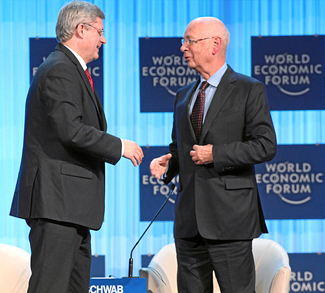Now that the Canada-EU free trade agreement (the Comprehensive Economic and Trade agreement, or CETA) is entering the final phase of negotiations, the Harper government finds itself on the brink of accomplishing one of its most important foreign policy goals: the diversification of Canada’s trade portfolio. In this article, the GPM’s Zachary Fillingham examines the remaining hurdles and what a deal would mean for both economies.
Going by statements from both sides of the CETA negotiating table earlier this week, one might get the impression that a compromise is not in the cards. Karel De Gucht, the EU Trade Commissioner, went on record saying that “[Canada] needs to make additional steps and, if not, there will be no agreement.” In response, the Council of Canadians, an influential left-leaning Canadian citizen advocacy group, put out a press release urging the Harper government to walk away from it called a “flawed deal.”
Despite the tough talk, it’s likely that a deal will get done sooner rather than later, and this is primarily because there are various outside factors threatening to close the window of opportunity for reaching a deal. One such factor is the emergence of the United States as another free trade dance partner for the EU. Last week, President Obama announced that the US would immediately open up a round of trade talks with the EU. Since the American market represents a far bigger economic prize than Canada, this development serves to compromise the Canadian negotiating position. The U.S. appearance so late in the game is reminiscent of Canada’s bilateral trade negotiations with South Korea, which, against the backdrop of not only a successful US-ROK agreement but an EU-ROK one as well, have in Canada’s case not been met with any success.
Impending elections in the European Parliament is another factor creating a sense of urgency in Canada-EU trade negotiations. If an agreement isn’t reached and ratified before 2014 elections, then substantial delays can be expected in the ratification process.
Given the nature of these outside developments, it appears that time is not on Canada’s side, and given the fact that diversifying Canada’s trade portfolio stands as an important goal of the Harper government- it’s likely that Canada will have to give ground on its negotiating stance in order to get a deal done.
According to the information that is publically available, the major issues that are currently holding up a deal are: agricultural exports, intellectual property, and the liberalization of government procurement markets. Yet the CETA negotiating process is one that has mostly taken place behind closed doors, giving rise to rampant speculation over the actual substance of the terms being discussed. For example, there is a lot of buzz circulating that CETA, unlike past bilateral free trade agreements like NAFTA, will engender a liberalization of municipal procurement processes; or, in other words, make it impossible for city governments to adopt ‘buy Canada’ ordinances. This clause alone has led several cities across Canada to pass resolutions ‘exempting’ themselves from CETA.
Another rumor circulating around ongoing CETA negotiations is that a final deal would need to include a strengthening of Canada’s pharmaceutical patent laws, which would in effect mean higher drug costs in Canada. It’s likely that the issue of drug patents is the primary sticking point in negotiations, as it is something that cannot be circumvented with a few deftly-placed loopholes, as is the case with municipal procurement, and it also has the potential of being politically toxic via across the board drug price hikes.
However, federal opposition to CETA can be characterized as tepid at best, as evidenced by the fact that even Tom Mulcair, the leader of Canada’s historically anti-free trade New Democratic Party, has privately and publically impliedthat he would be amenable to CETA. Given this lack of political headwinds, the Harper government is free to accept a deal and follow through on its promise to diversify Canada’s trade portfolio- even if the final deal is long on give and short on take.
The argument behind taking a deal, any deal, is the potential economic benefits for Canada that free trade would entail. According to the Harper government, CETA would increase two-way trade by 20 percent, creating 80,000 new jobs and adding $12 billion to Canada’s GDP in the process. It would also serve to diversify Canadian trade away from the US market, which currently accounts for 75% of Canada’s exports.
As always, there will be winners and losers in the Canadian economy if CETA comes to pass. Identifying some of the projected ‘winners’ has been made easier by the fact that various Conservative MPs have been touring Canada to spread the gospel of which Canadian products will benefit the most. These products include: wheat, timber, potatoes, pleasure craft, and of course, maple syrup. Canadian aerospace, transport, and other manufacturing industries would also benefit from unhindered access to global supply chains, which would serve to drive down their overall production costs. Another potential beneficiary would be the Canadian pharmaceutical industry. According to Canada’s Research-Based Pharmaceutical Companies (Rx&D), Canada’s drug companies could hope to attract new sources of foreign investment.




